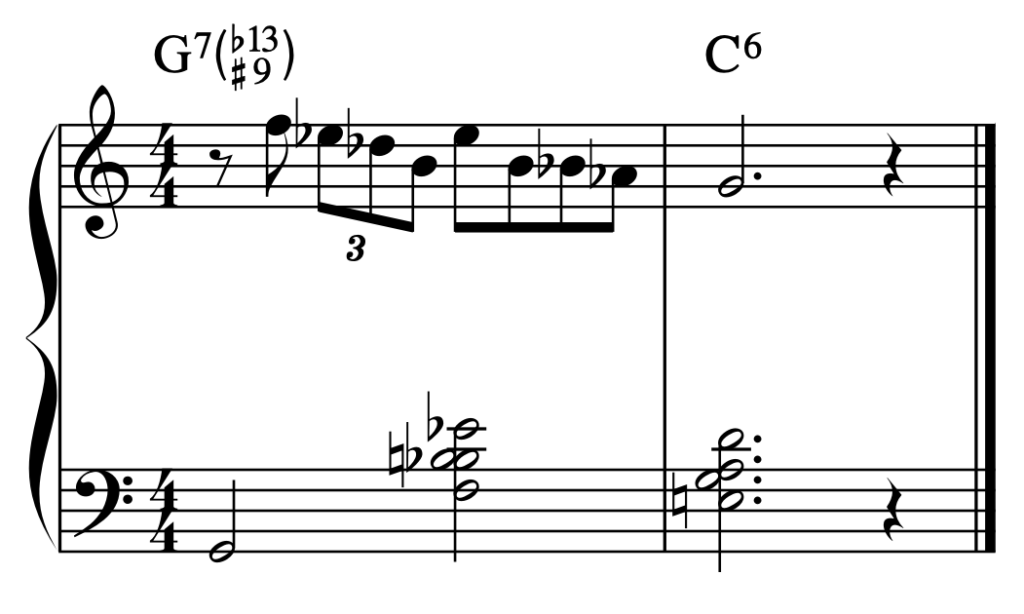Jazz basics 4: the altered scale
Here in jazz basics 4 the altered scale derives from the melodic minor scale a half step above the root note of the dominant 7. All will be explained!
We are now going to explore the altered scale. This scale has all four altered notes and can be used over a dominant 7 chord to great effect when soloing.
(This is a continuation from my previous blogs called ‘The most important chord in jazz’.)
Let’s begin by naming these four altered notes that form part of the altered scale. The four notes are sometimes known as alterations. They are flat 9, sharp 9, sharp 11 and flat 13.
These four notes over a G7 chord are Ab, A#, C# and Eb and are a part of the altered scale.
As you already know, G Myxolydian mode runs from G to G on the white notes.

The three extensions are those notes in the scale above but not in the chord: A, C and E.
Take the first note: A. This is the 9.
Flatten this A and this Ab is the first alteration: flat 9.
Sharpen this A and this A# is the second alteration: sharp 9.
Next, take the second extension: C. This is the 11.
And now sharpen it. C#is is the third alteration: sharp 11.
Take the the third extension: E,
Now flatten it. Eb is the forth alteration: flat 13.
So G altered scale sounds like this.
And looks like this:

And here’s a phrase that utilises this altered scale over a G7 resolving to C6.

Here’s how it sounds.
Notice that my left hand is rootless and also uses alt notes. You will find plenty of guidance about rootless voicings in lesson 15 of my learn jazz piano online course. But in the above example my left hand chord contains the sharp 9 and flat 13.
For the full course click here.
My full video course
My full video course contains over 30 lessons with downloadable backing tracks and sheet music.
Learn Jazz Piano Online